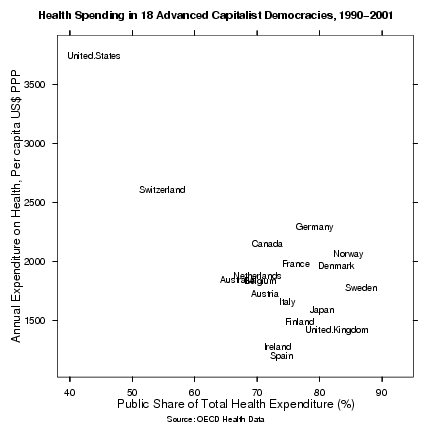Racial Identification, and Words Spoken to Children
Think you can spot an Arab American? If so, guess again. Most Americans are notoriously bad at identifying people by their race or ethnicity, asserts Jeremy M. Weinstein, an assistant professor of political science at Stanford University.I'm not surprised that people are so bad at identifying Latinos and Arabs. But what explains the finding that people identified blacks only 81 percent of the time? The only thing I can think of is that the study classified individuals as "African-American" who have a good deal of white ancestry. One particularly famous example is Walter White, who headed the NAACP starting in 1929, but who reportedly was only 1/64th black. (Why was he considered "black"? Because of the one-drop rule.) I have friends from Nigeria and the Sudan, and it would be absolutely impossible to confuse them with non-Africans.
"In a climate where discrimination against Arab Americans is on the rise, people are often getting it wrong," said Weinstein, who conducted the research with colleagues James Habyarimana of Georgetown University, Macartan Humphreys of Columbia University and Daniel N. Posner of UCLA.
That's an understatement. In tests conducted on the campuses of USC and UCLA in Los Angeles, nearly 100 study participants were shown a series of photos of young people and asked to guess their race or national origin. The images were selected to be a representative sampling of facial types of Asians, blacks, Caucasians, Latinos and people of Middle Eastern descent.
These students were able to correctly identify the ethnicity of Arab Americans only about 27 percent of the time.
The students did better with the Latino photos, successfully matching the face with the correct ethnicity about 58 percent of the time. African Americans were correctly identified 81 percent of the time, Asians more than nine out of 10 times.
Then there's this:
What explains the differences in the scores of black and white students on various tests designed to measure reading and math levels? There are lots of suspects, including racist teachers, culturally biased tests or instructional materials and resource-strapped schools, says sociology professor George Farkas of Pennsylvania State University in the latest issue of Contexts, a journal published by the American Sociological Association.Aha! I've posted about this study before, and noted how utterly implausible it was that anyone actually spoke that much to their children, as it would require non-stop, auctioneer-style speaking for every waking minute of every day. So it turns out that researchers came up with the 20 million figure by spending one hour in families' homes. I can only assume that they extrapolated from there. But any bets that the parents realized that they would look better in the study if they spent that one hour talking intensively to their children as opposed to turning on a video of Boohbah*?
But Farkas suspects there's another reason: the Word Gap.
Researchers know that being raised in a word-rich environment creates vocabulary and language skills that are the building blocks of education. The problem is that many poor parents don't have the time, the language skills or perhaps the energy to converse a lot with their kids, which puts their offspring at a disadvantage even before they begin preschool, Farkas said.
Farkas reported that working- and middle-class parents spoke about 20 million words to their children, while parents of low-income children said only 10 million. He based his conclusions on insights first published by developmental psychologists Betty Hart and Todd Risley of the University of Kansas. These researchers spent an hour each month in the homes of 42 families, transcribing and then counting the words spoken to the children.
*Boohbah is a PBS kids show that makes the Teletubbies look like Masterpiece Theatre.
Labels: education


